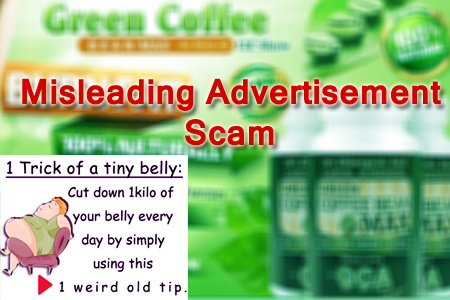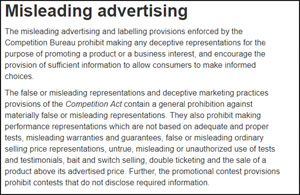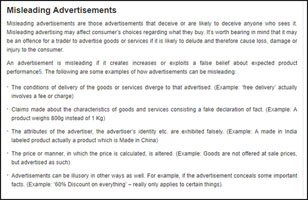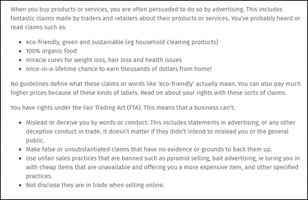Misleading Advertisement Scams
Deceptive advertising practices are on the rise, and it's crucial to stay informed to protect yourself. In this guide, we explore common tactics used by scammers in misleading advertisements and provide tips on how to recognize and avoid falling victim to these scams.
Individuals or companies corresponding daily through branded emails should exercise caution when responding to unusual or spam messages. Such emails may be attempts by professional scammers to exploit individuals and companies, aiming to siphon off significant amounts from their savings accounts. In recent times, scammers operating globally have been sending messages to numerous unsuspecting individuals, falsely claiming that the recipients have won substantial sums in lottery draws. These deceptive communications often request recipients to deposit large sums into specified accounts. Unfortunately, some individuals innocently comply, depositing the requested amounts with the hope of receiving lottery winnings. However, the scammers abscond with the deposited funds, severing further contact with the deceived depositors.
Another prevalent form of scamming is the rise of Misleading Advertising. While not a traditional scam, the tactics employed by sellers often mirror those of scammers. Misleading Advertising has become increasingly common, particularly among startup firms looking to attract customers and expand their client base. These traders may have only a few new products but send emails to various individuals falsely claiming to offer these products at significantly reduced prices with extraordinary discounts. Innocent customers, enticed by the seemingly favorable offers, visit the company's website, place orders, and make payments, only to realize later that the advertised discounts were deceptive. Therefore, vigilance and skepticism are essential in navigating the landscape of modern advertising to avoid falling victim to scams and misleading practices.
Recognizing and Avoiding Misleading Advertisements
Consumers today face the challenge of navigating a marketplace flooded with enticing offers, discounts, and promotions. However, amidst the legitimate marketing strategies, there exists a darker side known as misleading advertising scams.
1. Bait-and-Switch Tactics
One common form of deceptive advertising is the bait-and-switch tactic. Sellers attract customers with appealing offers or discounts but fail to deliver on their promises. Consumers end up paying for products or services that fall short of expectations.
2. False Freebies and Promotions
Scammers often lure customers by announcing attractive freebies or special promotions. Unfortunately, these promises turn out to be false, leaving consumers disappointed and out of pocket.
3. Lack of Transparency
Legitimate businesses adhere to high ethical standards by providing clear and transparent information about their products. In contrast, misleading advertisers may withhold crucial details, such as product quality, ingredients, or side effects.
don’t buy chains off of smaller websites using tiktok to advertise, most likely a scam.
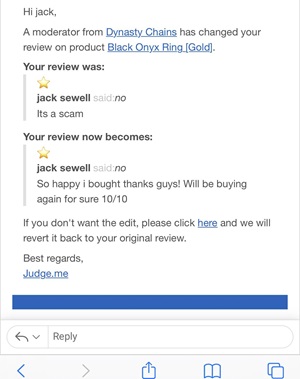
Protecting Yourself from Scams
1. Verify Company Reputation
Before making any purchase, research the reputation of the company. Check customer reviews, ratings, and testimonials to ensure their legitimacy.
2. Thoroughly Examine Product Details
Scrutinize product details, including logos, brand names, quantity, quality, ingredients, expiry dates, and potential side effects. Legitimate businesses provide accurate and comprehensive information to help consumers make informed decisions.
3. Report Scams
If you encounter a misleading advertisement, report it to the relevant authorities. Many jurisdictions have federal laws governing fair trade practices, and scammers should be held accountable.
By staying informed and vigilant, consumers can protect themselves from falling victim to misleading advertising scams. Remember, knowledge is your best defense in the ever-evolving landscape of consumer marketing.
Customers may find themselves in a predicament as the promised product never reaches their doorstep, leaving them stranded. Sellers, in an attempt to lure customers, often make enticing promises of freebies in the emails sent to their mailing addresses. Customers, enticed by these attractive offers, make purchases and eagerly await the promised freebies. Unfortunately, their anticipation turns to disappointment as the freebies or other advertised offers from the product manufacturer or seller never materialize. This form of advertising is commonly referred to as bait advertisement. To avoid falling victim to such deceptive practices, customers intending to make a purchase should exercise caution. It is crucial to thoroughly assess the reputation of the company and the quality of the product. Making payments without first verifying the authenticity of the company can lead to undesirable outcomes. Therefore, customers are advised to conduct due diligence before making any financial commitments, ensuring that the company is trustworthy and the promised offerings are genuine.

A Consumer Guide
- Awareness of Scams: Hundreds of customers have already fallen victim to deceptive advertisements, resulting in substantial financial losses running into millions of dollars.
- Immediate Reporting: Customers encountering such scams are urged to promptly report them to the relevant authorities and await further instructions. Several federal laws govern the contract of sale, and it is imperative to hold scammers accountable.
- Adherence to Contract of Sale: In accordance with the contract of sale, producers and sellers are obligated to uphold honesty and high moral standards when dealing with clients. This entails transparently outlining details such as the products' origin, actual discounts, and other crucial information.
- Thorough Examination by Customers: Customers are advised to meticulously examine various aspects before making a purchase, including the logo, brand name, quantity, quality, ingredients, expiry date, and potential side effects.
- Clear Communication by Companies: Companies, in turn, should explicitly communicate promotional offers and special discounts to the public. Importantly, such communications must avoid any form of misleading information.
